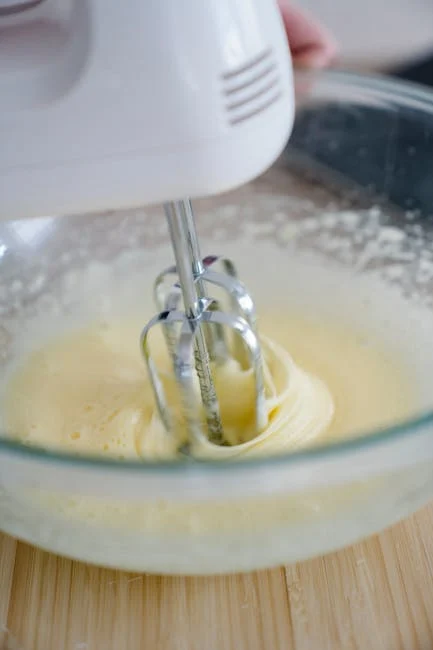Baking delicious pastry often conjures images of stand mixers whirring away. But what if you don’t have one, or prefer a more hands-on approach? The good news is that creating flaky, tender pastry without a mixer is absolutely possible, and in some cases, even preferable!
Baking Pastry Without a Mixer: The Essential Guide
Understanding the Basics of Pastry Making
Before diving into techniques, let’s understand what makes great pastry. The key is cold fat distributed throughout the flour. As the pastry bakes, the fat melts, creating steam and layers that result in a flaky texture.
The Cold Fat Factor
Maintaining cold fat is crucial. Whether you’re using butter, shortening, or lard, ensure it’s well-chilled before you start. Work quickly to prevent the fat from melting during the mixing process.
Tools of the Trade (Beyond the Mixer)
- Pastry Blender/Cutter: This tool helps to cut the fat into the flour without overworking the dough.
- Your Fingers: While less conventional, using your fingertips can be surprisingly effective for a more controlled and rustic result.
- Rolling Pin: Essential for rolling out the dough to the desired thickness. Choose a good quality one.
- Bench Scraper/Pastry Scraper: Helps to gather and transfer dough easily.
- Large Bowl: Provides ample space for mixing ingredients.
Techniques for No-Mixer Pastry Perfection
The Rubbing-In Method
- Combine flour and salt in a large bowl.
- Add the cold, cubed fat to the flour mixture.
- Use a pastry blender (or your fingertips) to cut the fat into the flour until the mixture resembles coarse crumbs.
- Gradually add ice-cold water, a tablespoon at a time, mixing gently until the dough just comes together.
- Wrap the dough in plastic wrap and chill for at least 30 minutes before rolling.
The Folding Technique
This method creates extra flaky layers.
- Follow steps 1-3 of the rubbing-in method.
- Add the ice water and bring the dough together as before.
- Turn the dough out onto a lightly floured surface.
- Roll the dough into a rectangle.
- Fold the dough into thirds, like a letter.
- Wrap and chill for at least 30 minutes.
- Repeat the rolling and folding process 2-3 more times for optimal flakiness.
Troubleshooting Common Pastry Problems (Mixer-Free)
- Tough Pastry: Overmixing is the enemy. Handle the dough gently and avoid working it too much.
- Pastry Shrinking in the Oven: Insufficient chilling time or overworking the gluten can cause shrinkage. Make sure to chill the dough properly.
- Dry Pastry: Add water gradually until the dough just comes together. Too much flour can result in a dry pastry.
- Lack of Flakiness: Ensure the fat is cold and distributed evenly throughout the flour. The folding technique can also help.
Recipes That Shine Without a Mixer
- Pie Crust: The classic application for no-mixer pastry making.
- Scones: A simple and delicious treat that benefits from a hands-on approach.
- Galettes: Rustic and free-form tarts where a slightly imperfect texture is part of the charm.
- Hand Pies: Individual pies that are perfect for experimenting with different fillings.
Conclusion
Don’t let the absence of a mixer deter you from baking beautiful and delicious pastry. By understanding the fundamental principles, mastering manual techniques, and following a few simple tips, you can create flaky, flavorful pastry that rivals anything made with a machine. Embrace the hands-on approach and enjoy the process of creating something truly special!
